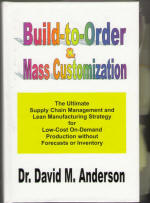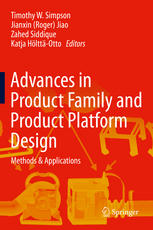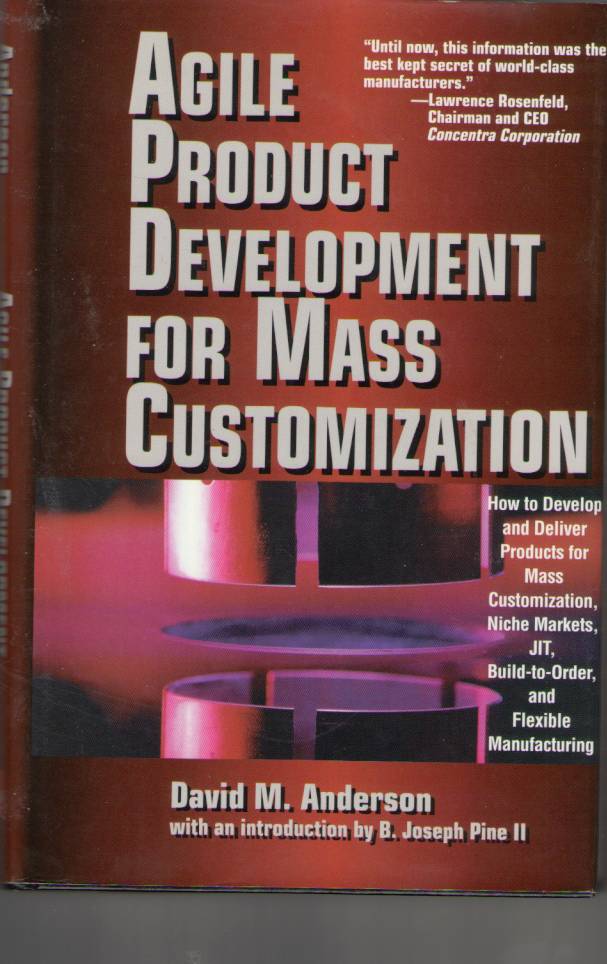

[DFM Consulting] [DFM Seminars] [DFM Books] [Credentials] [Clients] [Site Map]
[DFM article] [Half Cost Products site] [Standardization article] [Mass Customization article] [BTO article] [Rationalization article]
the 2020 DFM book is now also KNOWM as tje
2020 DFM book
is now also KNOW as the
BOOK OF STANDARDS
for universal needs for
Design for strictness, innovation, &
optimizing everything
WHAT MAKES THIS THE BEST DFM BOOK EVER
This
600 page book adds what the publisher says is already the definitive
work on
product development and now the Second Edition adds 100 new
and unique pages that
have never been published before, thus resulting in the following:
Thorough
manufacturability can be complete products in h
alf the budget with savings ranging
from half to one-tenth in nine categories (3.8).
Research and early product development start with Manufacturable Research (3.9), that optimizes concept/architecture (3.3.9), assures part availability (3.9.7) and process availability, (3.9.10), achievable tolerances (3.9.8), and avoids work force challenges (4.8.4.2) on hard-to-build products (3.9.9), all of which can start providing immediate scalable, commercialization results. The design process emphasizes thorough up front work (Chapter 3) in complete multi-functional tams (Chapter 2) that cane quickly scale up production without limits, delays, or extra cost (4.8)) to avoid shortages by design by design.
Product development improvement champions and implementers will also benefit from Section 3.11 (and its 10 sub-sections) on generating interest in designing better products for manufacturability. All this can be applied right away on a project team (11.7) in its own micro-climate (3.11.6.1).
LEADING-EDGE
BOOKS BY
DR. DAVID M ANDERSON, P.E., CMC, fASME
New
2020 book to be published June 2,
which can be pre-ordered
now AT:
https://www.amazon.com/Design-Manufacturability-Concurrent-Engineering-High-Quality/dp/0367249944/ref=sr_1_2?dchild=1&keywords=MANUFACTURABILITY&qid=1589596590&s=books&sr=1-2-
 "Design
for Manufacturability: How to Use Concurrent Engineering
to Rapidly Develop Low-Cost, High-Quality Products for Lean Production," Second
Edition (690 pages,
Productivity Press)
"Design
for Manufacturability: How to Use Concurrent Engineering
to Rapidly Develop Low-Cost, High-Quality Products for Lean Production," Second
Edition (690 pages,
Productivity Press)
Design
for Manufacturability: How to Use Concurrent Engineering to Rapidly Develop
Low-Cost, High-Quality Products for Lean Production is
still the definitive work on DFM – this second edition extends the proven
methodology to the most advanced product development process with the addition
of the following new, unique, and original topics, which have never been
addressed previously. These topics show you how to:
· Cut
cost from 1/2 to 1/10 in 9 categories -- with ways to remove that much cost from
product charges and pricing.
· Commercialize
innovation -- starting with Manufacturable Research and learning from
the new section on scalability, you will learn how to design products and
processing equipment to scale quickly to any growth levels.
· Design
product families that can be built “on-demand” in platform cells that also
“mass customize” products to-order
· Make
Lean production easier to implement with much more effective results while
making build-to-order practical with spontaneous supply chains and eliminating
forecasted inventory by including updated chapter on “Designing Products
for Lean Production.”
· Engineers who
want to learn the most advanced DFM techniques
· Managers who
want to lead the most advanced product development
· Project
team leaders, who want to immediately apply all the
principles taught in this book in their own micro-climate
· Improvement
leaders and champions who want to implement the above and
ensure that the company can design products and versatile processing equipment for low-volume/high
mix product varieties
Complete Table of Contents for DFM book is at the end of this page.
To enquire about public and in-house DFM seminars and webinars, fill out the form.
"Build-to-Order & Mass Customization; The Ultimate Supply Chain Management and Lean Manufacturing Strategy for Low-Cost On-Demand Production without Forecasts or Inventory," by David M. Anderson, (2008, CIM Press, 512 pages). To view the complete table of contents or order, click here for the books page at www.build-to-order-consulting.com. Seminars and consulting based on this leading-edge methodologies are available now through Dr. Anderson’s Mass Customization consulting and Mass Customization seminars. A overview of the approach can be found in the article Build-to-Order.
Free
BTO book, signed by the author, for US callers. Just call Dr. Anderson at
805-924-0100 (after 8:30 am Pacific) fo r
a free assessment of how much these methodologies can help your company
r
a free assessment of how much these methodologies can help your company
To order the BTO book, go to this book's order page at http://www.amazon.com
Many
product scenarios has been worked out for several industries and will be
published later in "The Build-to-Order & Mass
Customization Case book." These specific
methodologies are available now for Build-to-Order
consulting and Build-to-Order
seminar clients.
Dr.
Anderson's "how to" chapter from the forthcoming book,
"Advances in Product Family and Product Platform Design," shows
how to develop product families, "Building, Supplying, and
Designing Product Families." can be downloaded
now for $29.95 at the Springer Publishing site at http://link.springer.com/chapter/10.1007/978-1-4614-7937-6_23
ERSON:
 (1997;
out of print)
(1997;
out of print)Dr. Anderson also wrote the first "how to" book on Mass Customization: "Agile Product Development for Mass Customization; How to Develop and Deliver Products for Mass Customization, Niche Markets, JIT, Build-to-Order, and Flexible Manufacturing," by David M. Anderson, with an introduction by B. Joseph Pine II, published by McGraw-Hill in 1996 is now out of print. The book has been printed in a Chinese translation (simplified character Mandarin) from McGraw-Hill's Singapore office: www.asia-mcgraw-hill.com.sg
Link to book description and used book order links at http://www.amazon.com .
THE QFD HANDBOOK
Dr. Anderson was asked to write a Chapter 6, "QFD and Designing for Manufacturability and Customization," in the QFD Handbook, by Jack B ReVelle, John W. Moran, and Charles A. Cox (1998, John Wile, 410 pages)
SME TOOL AND MANUFACTURING ENGINEERS HANDBOOK
The Society of Manufacturing Engineers asked Dr. Anderson to write the opening chapter, "Design for Manufacturability," for its Tool and Manufacturing Engineers Handbook, Volume VI, on Design for Manufacturability, (1992. Fourth Edition, SME)
INDUSTRIAL ROBOTICS HANDBOOK
In
1983 Dr. Anderson wrote an essay on “The Future of
Robotics” in the Industrial Robotics Handbook, by V.
Daniel Hunt (1983, Industrial Press, 432 pages)
Dr. Anderson can be reached at 805 924 0100 (Pacific Time
Zone) or e-mail: anderson@build-to-order-consulting.com
Design
for Manufacturability: How to Use Concurrent Engineering
to Rapidly Develop Low-Cost, High-Quality Products for Lean Production" Second
Edition;
Published by Productivity Press, 2020
(Sample TOC entries: Red and italic type below indicate unique or not puibhed anywhere else)
Section I Design Methodology
Chapter 1 Design for Manufacturability............................................ 3
1.1 Manufacturing before DFM
1.1.1 What DFM is Not
1.1.2 Comments from Company DFM Surveys
1.2 Myths and Realities of Product Development
1.3 Costs, When they Are Determined
1..4 Designing for Low Cost9
1.5 Time-to-Market, Cutting it in Half
1.6 Roles and Focus.
1.7 Resistance to DFM
1.8 Arbitrary Decisions
1.9 Design Time, Reducing it with DFM
1.10 Engineering Change Orders
1.11 Do it Right the First Time
1.12 Strategy to Do it Right the First Time
1.13 Benefits of DFM for the Company
1.14 Personal Benefits of DFM
.15 Conclusions of DFM Intro.
hapter 2 Concurrent Engineering................................................... 37
2.1 Resources
2.2 Resource Availability, Ensuring
2.3 Portfolio Planning for Products
2.4 Parallel and Future Projects
2.5 Designing Products as a Team
2.6 Vendor/Partnerships
2.7 DFM for Aerospace and Defense
2.8 Changes Late From Customers and Specs
2.9 Co-location
2.11 Outsourcing Engineering.
12 Product Definition..Chapter 3 Designing the Product.................................................... 115
3.1 Design Strategy
3.2 Thorough Up-Front Work, Importance of......
3.3 Architecture/System Design, How to Optimize.
3.4 Part Design Strategies.
3.5 Design for Everything (DFX).
3.6 Creative Product Developmen
3.7 Brainstorming
3.8 Half-Cost Product Development
3.9 Manufacturable Research
3.10 Commercialization
3.11 Generating Interest in DFM
Section II Flexibility
Chapter 4 Designing for Lean & BTO............................................. 197
4.1 Lean Production
4.2 Build-to-Order
4.3 Mass Customization.
4.4 Developing Products for Lean, BTO&MC
4.5 Portfolio Planning for Lean, BTO&MC
4.6 Low-Volume/High-Mix, Designing fo 4.7 Platform Family Design & Manufacture
4.8 Scalability
4.9 Modular Design
4.10 Offshoring and Manufacturability.
4.11 Lean and BTO&MC Value
Chapter 5 Standardization............................................................... 239
5.1 Part Proliferation
5.2 Part Proliferation Cost
5.3 Part Proliferation, Why it Happens
5.4 Part Proliferation Consequences
5.5 Part Standardization Strategy
5.6 Early Standardization Steps
5.7 Zero-Based Approach
5.8 Standard Part List Generation
5.9 Part Standardization Results
5.10 Raw Materials Standardization
5.11 Standardization of Expensive Parts
5.12 Consolidation of Inflexible Parts
5.13 Tool Standardization
5.14 Feature Standardization
5.15 Process Standardization.
5.16 Encouraging Standardization
5.17 Reusing Designs, Parts, and Modules
5.18 Off-the-Shelf Parts
5.19 Procurement, New Role Needed
5.20 Standardization Implementation
he book Table of Contents has 814 entries in four levels, two of which are shown in four sample chapters above.
The Index is fullly cross-indexed with 2511 entries, with unique or never-before-published topics in italics, as is also done in the Table of Contes. This is especiallly useful for people upgrading from the 2014 first edition.
[Home] [DFM Consulting] [DFM Seminars] [DFM Books] [Credentials] [Clients]
[DFM article] [Half Cost article] [Standardization article] [Mass Customization article] [BTO article] [Rationalization article]
Copyright © 204 by David M. Anderson
BOOK OF
STANDARDS
for universal needs for
Design for strictness, innovation, &
optimizing everything
Timely article: How to
avoid most shortages now
AND design new products for unlimited Scalability
see revised article at: http://design4manufacturability.com/scalability.htm
If
you don't know who
your customers are going to be
or what they will want, you must Build-to-Order.
see: www.build-to-order-consulting.com
If you don't have enough resources to
develop good products fast,
make that twice as efficient as possible* and don't "take all
orders."
* see:
http://www.design4manufacturability.com/concurrent-engineering.htm
Timely Article on The Case against Orrshoring:
http://www.design4manufacturability.com/offshoring.htm
Companion article on this site on hidden offshorIng costs
Pivotal Article How to Design Half-Cost Products
The age shows nine categories of cost
reduction ranging from 1/2 cost to 1/10 of the previous costs
. Each cost category has one to two hyper-links that present the principles.
New Article on strategy: http://www.design4manufacturability.com/strategy.htm
Alphabetical listing to to 26 Articles Site locator to 50 pages on this site
Feature articles: Commercialization and Half-Cost Solar
New
2020 Secomd Edition book: "Design
for Manufacturability: How to Use Concurrent Engineering
to Rapidly Develop Low-Cost, High-Quality Products for Lean Production"
Also, the most thorough book ever written on Build-to-Order & Mass Customization
Cost reduction can result in significant product cost saving, manufacturing cost saving, and life cycle cost saving when companies interested in cutting cost implement all 8 the elements of the following cost reduction strategy:
article on HALF COST PRODUCTS
Cost Reduction Opportunities:
The Results:
How to Reduce Product Cost by Design:

Activities Supportive to Low Cost Product Development:
Cost Reduction Opportunities:
The Results:
How to Reduce Manufacturing Cost:
Activities Supportive to Lean Production:
New: Section 3.8 in the 2020 DFM book on Half Cost Product development focuses on 9 cost categories that cost results range from half to 10 times less, for the overhead categories.
THis is presented at the web page: Designing Half Cost Products at: https://www.design4manufacturability.com/designing_half_cost_products.htm
The easiest to implement at that level of cost savings (without needing to change the cost system) is material overhead (Section 3.8.10: "Material Overhead Can be Cut by 10 Times").
See
article on "How to Build-to-Order Product
Families"
April
& Sept. webinars on
Design for Lean & Build-to-Order
2-day webinar: April 19-22 and Sept 20-23 from 1-5 PM EST
Complete description at : https://qualitysupportgroup.com/design-for-lean-manufacturing/
See published article on how to implement Mass Customization in the April 2011 issue of Mechanical Engineering, published by ASME
Cost Reduction Opportunities:
The Results:
How to Reduce Overhead Cost:
Activities Supportive to Build-to-Order & Mass Customization:
Cost Reduction Opportunities:
The Results:
How to Reduce Cost with Standardization:
Activities Supportive to Standardization:
Cost Reduction Opportunities:
The Results:
How to Reduce Cost with Product Line Rationalization:
Activities Supportive to Product Line Rationalization:
Cost Reduction Opportunities:
The Results:
How to Reduce Cost in Supply Chain Management:
Activities Supportive to Supply Chain Cost Reduction:
Cost Reduction Opportunities:
The Results:
How to Reduce the Cost of Quality:
Activities Supportive to Quality Cost Reduction:
Cost Reduction Opportunities:
The Results:
How to Reduce Cost with Total Cost Measurements:
Activities Supportive to Total Cost Measurements:
OTHER VALUABLE ARTICLES:
New 2021 article: Design
to scale up millions When Needed
without supply shortages or production bottle-necks
If busy, go to: http://design4manufacturability.com/scalability.htm
If busy, go to http://www.build-to-order-consulting.com/scslsbility.htm
Don't try to remove cost after the product is designed because cost is designed into the product and hard to remove later; see article on How Not to Lower Cost. See new article on Seven Resons why "cost reduction" after design doesn't work at http://www.design4manufacturability.com/cost_reduction.htm
Don't use low-bidding, which only appears to save one category of cost, but can substantially raise many less-obvious costs and compromise other important goals like quality, delivery, and missing out on the major contributions that vendor/partners can make when they help product development teams design products; see article on Low-Bidding.
Don't offshore manufacturing for cost, which will not result in a net cost savings because of hidden overhead costs and because it inhibits, compromises, or thwarts 6 out of the 8 cost reduction strategies (presented on the home page) due to the following reasons:
Offshoring manufacturing separates manufacturing from engineering and thus thwarts Concurrent Engineering and compromises the 80% of the cost determined by the design. Further, transferring, supporting, and dealing with quality and delivery problems of remote manufacturing absorbs many resources in engineering (in one case, 75%), manufacturing, and purchasing whose time would be better spent developing low-cost products. See Cost Reduction by Design summary and the article Design for Manufacturability
Offshoring manufacturing to distant contract manufacturers increases the delivery time, which makes it hard to pull parts just-in-time and makes build-to-order impossible. Further, parts may be batched for shipping, which is opposed to the one piece flow aspects of Lean Production. Finally, offshoring manufacturing removes production from the control of the OEM manufacturer. All of these effects conspire to:
Compromise Lean Production; see Lean Production Cost Reduction summary and the article on Lean Manufacturing
Make if impossible to implement Build-to-Order and Mass Customization; see Overhead Cost Reduction summary and the Build-to-Order article and Mass Customization article.
Make it hard to implement standardization because contract manufacturers' preferred parts probably won't correspond to your standard parts, so, in order to realize the production benefits of standardization, part numbers may have to be changed, which may increase a company's part proliferation.
Make it hard to optimize supply chains; see Supply Chain Management Cost Reduction summary and details in the article on offshoring.
Make if hard to maximize quality and implement Six Sigma without data and control over manufacturing; see Quality Cost Reduction summary and the article Designing in Quality.
If all 8 cost reduction strategies are implemented, the cost
savings will be much greater than appeared possible through offshoring.
For more, see read the article on offshore
manufacture.
Don't take prototypes into production without
commercialization; Also see
article on
"How not to commercialize products"
Correcting counterproductive policies may be a prerequisite to designing Half-Cost Products.
Don't try to save cost with
unethical business practices. See the
article: Good Ethics is Good
Business.
====================================ies can help your company
|
Call Dr. Anderson at 1-805-924-0100 to discuss
implementing these techniques or e-mail him at
anderson@build-to-order-consulting.com with your
name, title, company, phone, types of products, and needs/opportunities. Web site on Design for Manufacturability (DFM) and Concurrent engineering: http://www.design4manufacturability.com/ Web site on Build-to-Order & Mass Customization: http://www.build-to-order-consulting.com/ |
Copyright 2441 by David M. Anderson
For moformation call or
e-mail:
Dr. David M. Anderson, P.E., fASME,
www.HalfCostProducts.com
phone: 1-805-924-0100
fax: 1-805-924-0200
e-mail:
anderson@build-to-order-consulting.com
Seminars Consulting Credentials Client List Articles Books Site Map